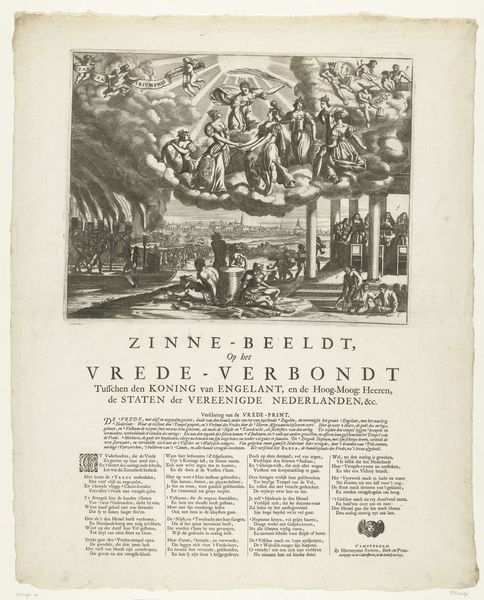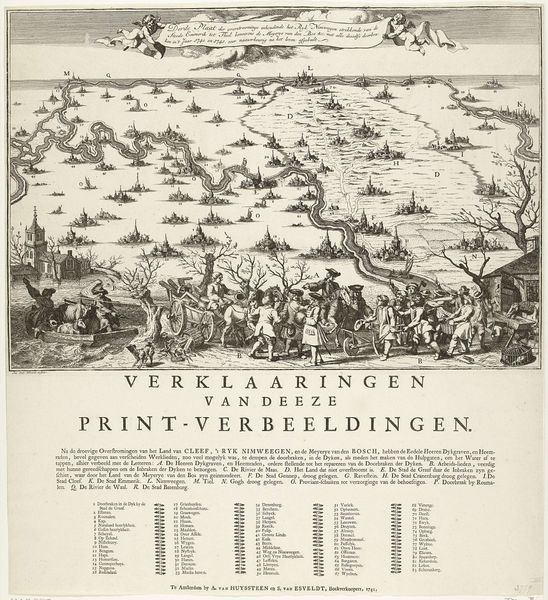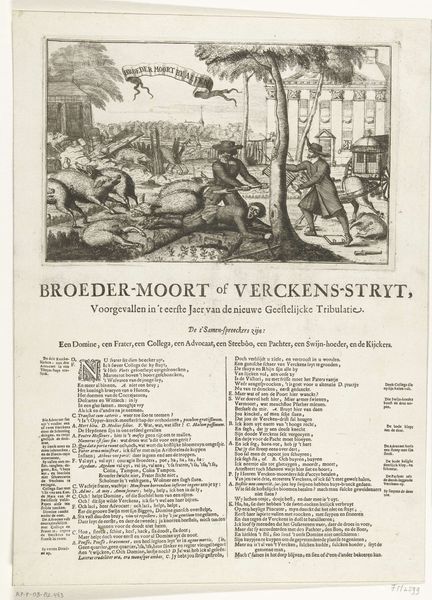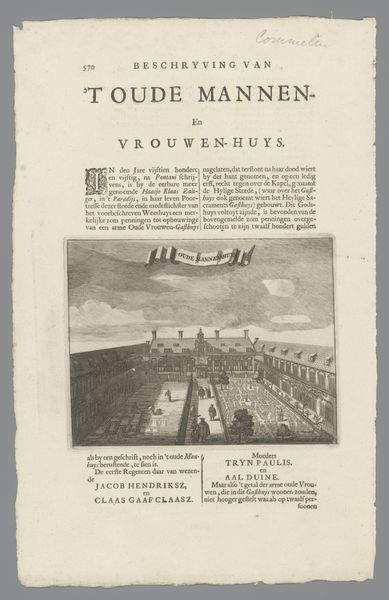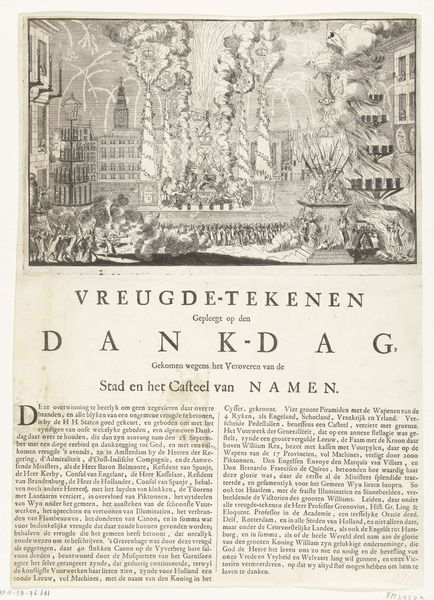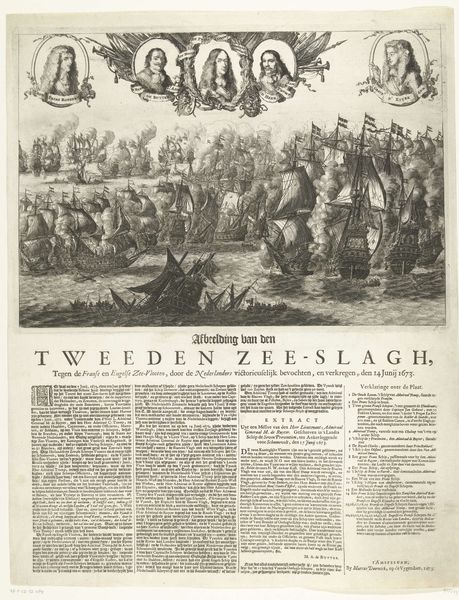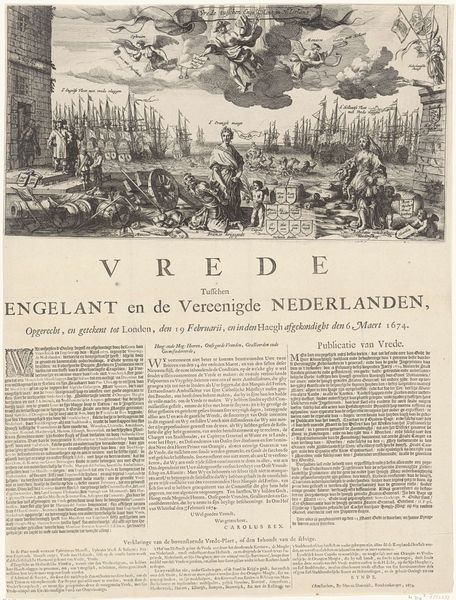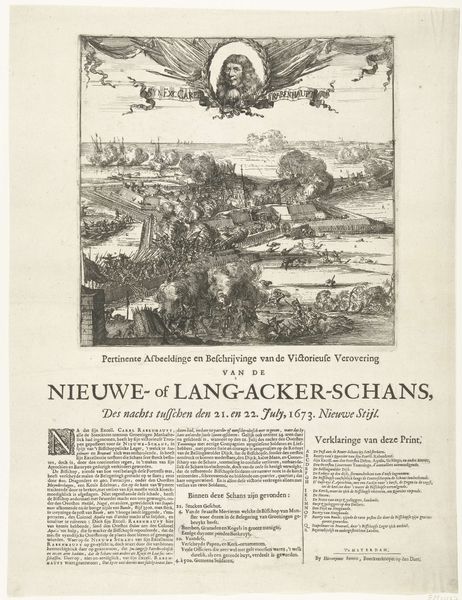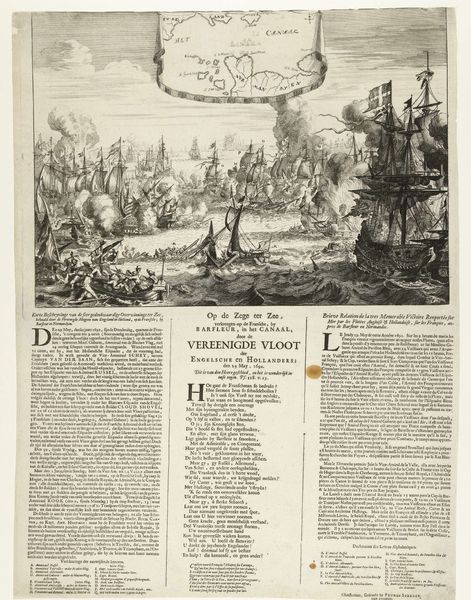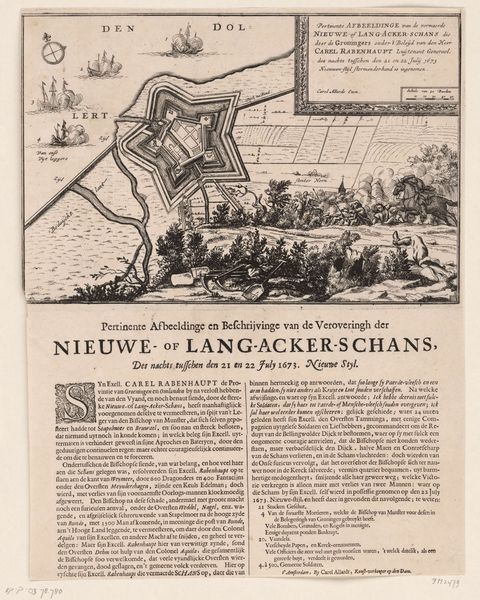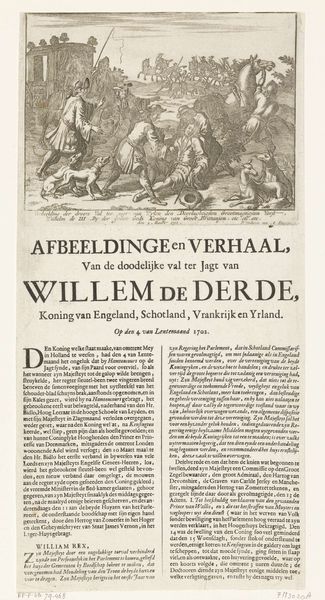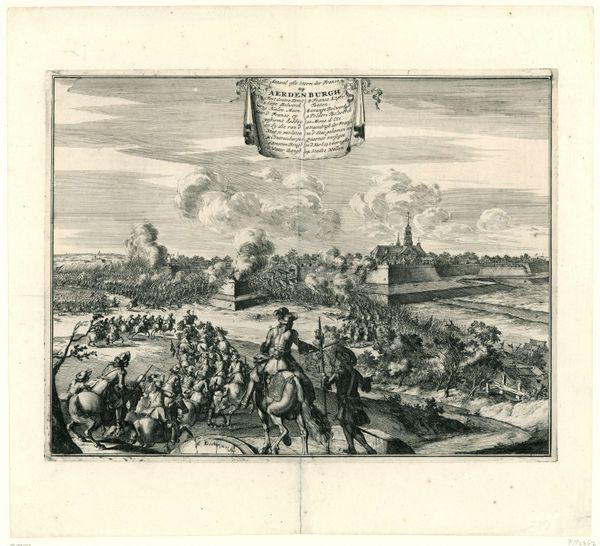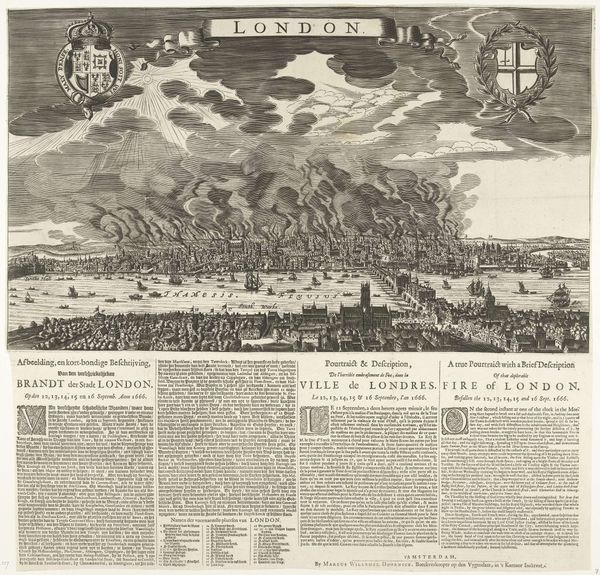
Verovering van Bonn en andere Duitse steden door de prins van Oranje, 1673 1673
0:00
0:00
print, engraving
#
baroque
# print
#
cityscape
#
history-painting
#
engraving
Dimensions: height 526 mm, width 394 mm
Copyright: Rijks Museum: Open Domain
Editor: Here we have "Conquest of Bonn and other German cities by the Prince of Orange, 1673" by Romeyn de Hooghe, an engraving. It strikes me as very celebratory, almost like a propaganda piece, showcasing military might. What do you see in this piece, beyond the surface level depiction of conquest? Curator: It's interesting you call it propaganda. I think it is definitely that, but let's dig deeper into its layered message. Think about the context: 1673, during the Franco-Dutch War. What does it mean to visually represent this "conquest" not just as a military victory, but also to emphasize the "conjunctive" effort with the Holy Roman Empire and Spain? What does it tell you about Dutch alliances at the time, or about power dynamics? Editor: Well, highlighting those alliances makes sense strategically. But framing it as a "conjunctive" effort almost downplays Dutch agency, doesn't it? Like they needed the other empires to achieve this victory. Curator: Precisely! And think about what is *not* shown. Who is missing from this supposedly triumphant image? The perspective of the conquered, the people of Bonn and those other cities mentioned. The victims of war and displacement are invisible, revealing the artist’s bias. Whose narrative is prioritized here? Editor: It's a very top-down perspective, focusing on the leaders and military strategy. I guess the average person experiencing the war is completely erased here, only representing those in positions of power. Curator: Exactly! And it’s that erasure, that careful crafting of a specific narrative that truly reveals its power as not just an artwork but a carefully constructed political statement intended for mass consumption. Do you feel the ‘conquest’ now holds another weight, as in a struggle for the narrative, and a marginalisation of lived experiences for a broader public opinion? Editor: Absolutely. I was so focused on the visual grandeur that I missed how much it leaves out, and how strategically. Curator: It's about unpicking the layers of meaning, recognizing whose voices are amplified and whose are silenced in the telling of history. Editor: That is so vital to consider, not just in this artwork but across so much art from the past. Thank you for opening my eyes!
Comments
No comments
Be the first to comment and join the conversation on the ultimate creative platform.
